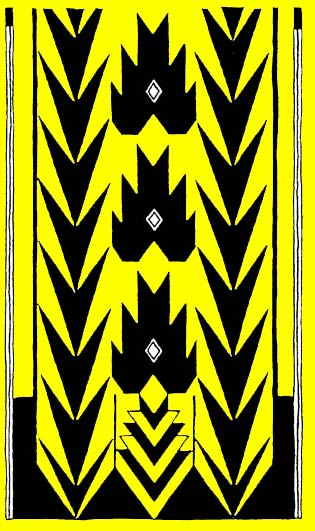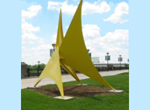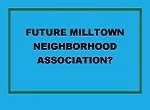Community Cultural Development: Where Arts and Civic Structure Interact
Last Updated: May 22, 2024
Community cultural development can strengthen some neighborhoods and regions, whether by reinforcing a shared identity, increasing community pride in the dignity of one's own culture, or leveraging your social and economic strength by inspiring new collaborations with the outside world.
Join us on this page as we examine examples of some well-defined cultural identities that help particular communities hold together.
The somewhat confusing community cultural development term has no universally agreed upon definition, but here we discuss collaborative and/or participatory arts, which may be motivated in part by aesthetics and genre-based arts, but also which are equally motivated by a desire to preserve or even enhance culture, broadly defined, and social bonds.

In this particular article we want to emphasize that some of you already have a native culture, indigenous tradition, or strong local arts history that you should reinforce and celebrate. Many communities will have such an advantage if they comb through their history carefully. As shown on this page, the Menominee tribe in Wisconsin has many beautiful designs upon which it can build.
Here we are not speaking about culture as "high art" or "fine art" necessarily, but we include all manner of traditional arts and folk arts as well. The term has a particular connotation of nurturing endangered arts as practiced by minority communities. In the process, these communities empower themselves in ever broadening circles of endeavor and civic activity.
We also believe community cultural development includes arts that speak to and sometimes challenge current social conditions. Arts-based revitalization and programming has been growing exponentially in the last few years in the community development field.
If you want to import artists from elsewhere because of their potential to enliven a neighborhood, you can learn about that different but very worthwhile activity on our page about arts and economic development, which might be called arts and community development with equal validity.
Examples of Community Cultural Development
1. Native American Potters
The tradition of painted pottery among the pueblo-dwelling tribes in what is now the U.S. Southwest began at least 2,000 years ago with the utilitarian need for vessels. At first it is believed that adornment was minimal to non-existent, but by the 1500's,the cultural importance of pottery was well established. "Uses" for the pottery were continually expanded, and when mass manufactured pottery began to be available to these Native American tribes, innovation in finding new uses for these traditional painted pots occurred.
Indeed, by the 1920s, the pottery styles preferred by tourists began to predominate. Some scholars, artists, and anthropologists bemoan this turn of events as a trend toward "commercialization" that somehow debases their artistic value.
However, we have spoken with some tribal artists who think it is accurate to say that passing on the knowledge of traditional techniques and materials helps maintain the strength of their community, regardless of the meaning to the purchaser and consumer of the art, who may ascribe a far different meaning to the piece.
In terms of our page, one could say that the community cultural development aspect of painted pots has begun to deteriorate as individual artists increasingly are signing their works and building their own reputations as opposed to submerging their identities into the social capital of the community. Painting the pots may not be as much of a participatory community activity as was once the case. Such are the compromises inherent in community cultural development, as we will notice in other examples below.
We will comment on only one other aspect of this example of community cultural development. Since the brutal confiscation of Native American land and obliteration of their previous methods of securing a livelihood, this group of now marginalized people has secured important income and other benefits as a result of the preservation of this traditional art.
2. Mask-Making and Mask-Wearing in Venice
Mask-making as a traditional art has flourished in Venice for centuries. At one time Venice was sort of the center of pleasure to the point of vice for Europe, and the masks served the utilitarian function of disguising one's identity. Mask-wearing occurred not only during Carnival, as is the primary focus of tourists and probably locals as well now, but also at other times of the year. To be fair, a sense of social leveling may be involved, in addition to hiding one's possible excesses.
The masks traditionally have been made of papier mache placed bit by bit into a plaster mold, with the finished product then coated with gesso to smooth out the rough edges before decorating. The mascherari (mask-makers) traditionally were accorded a great deal of social status, which continues to be the case with the small number still active. As you will be well aware if you have seen any, the artistic value of these can be extremely high.
We call mask-making and mask-wearing community cultural development clearly carried a cultural, social capital building, meaning. In 1797 Austrian interests captured Venice and banned the practice, but in the nineteenth century the practice enjoyed a resurgence. In fact, the more authorities tried to ban the wearing of masks except during Carnival, the more popular masks became.
This tells us that masking itself became a part of one's cultural identity and a means for the society to bond.
Again we see an accommodation of the traditional artists to the preferences of tourists, as some mask-makers now are doing a brisk business with the visitors on which the city is dependent. "What sells" seems to exert some influence over what is made, especially in view of the influx of mass-produced Chinese masks into the marketplace, even in Venice itself.
3. Gullah in the American Southeast
The Gullah and Geechee descendants inhabit barrier islands off the Atlantic coast of North and South Carolina, Georgia, and Florida. These people descended from slaves imported from West Africa or Central Africa. Even after slaves were freed in the U.S., these peoples retained their cultural identity due to geographic isolation, at least until bridges to the mainland started being constructed in the 1950s.
Most still live in rural communities where oral tradition, folklore, and storytelling remain important.
Today there is a decided effort to preserve many attractive pieces of this culture, including their music, food, dances, and visual arts, most notably traditional basket weaving. In addition, they retain a dialect of English that can be traced back to at least 30 African languages and have some traditional religious practices too.
In common with the Native American Puebloan tribes discussed in number 1 above, the Gullah are hard pressed to earn an adequate living without leaning on tourism and sales of their products to the broader society.
However, we have to say that we would argue that the federal government is giving the Gullah more assistance than the Native Americans. The National Parks Service has established a Gullah/Geechee Cultural Heritage Corridor stretching throughout the four states. In addition, the Cumberland Island National Seashore is home to some Geechee descendants, and the Geechee Kunda in Riceboro, Georgia, and the Avery Research Center in Charleston, South Carolina are examples of institutions that work to preserve and interpret Gullah and Geechee stories. Other museums and historic landmarks also abound.
In our conversations with a couple of Gullah descendants, we find their cultural identity to be a source of pride and selfless investment in their own communities.
4. New Orleans Jazz Funerals and Second Line Parades
Another strong example of community cultural development is the jazz funeral and second line parade tradition in New Orleans. Again we might see this as an adaptation to the pain of a minority community, in this case the strong African-American community in New Orleans. But to go along with our thesis for this page, we would maintain the the African-American community seems to have a stronger identity in New Orleans than in some other American cities precisely because of its adherence to colorful tradition, as well as its adaptation of that tradition as times and social conditions change.
The jazz funeral, a public procession between the site of a funeral and the burial site, seems to have developed after the Civil War in New Orleans. However, antecedent traditions can be found in West African cultures that probably influenced the development of this institution. For the uninitiated, the "first line" would be the bereaved family members, but the "second line" would be a variety of friends and others who want to join in the brass band's somber dirge at the beginning of the journey, which transitions over to joyous singing, shouting, and dancing, often in outlandish costumes, at the end of the procession.
Originally these events started as a marketing tool for the insurance and burial societies aimed at African-Americans. These social and pleasure clubs mostly use neighborhood-level streets; the astute traveler can find one almost every Sunday from September through May.
Looking at this from a community cultural development perspective, the societies that organize these funeral events certainly represent what is at times a tight-knit group. The performers and mourners both are expanding their social capital every Sunday no doubt.
As we have seen before, both the quality of the art and the community-building aspects of participating in the art are important. Yet like other examples on this page, social conditions and the need for income sometimes lead to pragmatic compromises and innovations in the way the art, in this case performing art, occurs. And yes, these Sunday doings bring tourist dollars into a community that can really use them.
5. Semana Santa Celebrations
Semana Santa celebrations occur all over the Hispanic world during Holy Week, the week before the Christian celebration of Easter. In Spain, many cities have traditions of elaborately costumed processions and re-enactments, Bible readings, and creation of pasos (religious statues). These nightly processions take place amid an air of festivity, and only sometimes an air of extreme religiosity.
Due to the amount of community work involved in putting on these very involved parades and associated events ranging from street parties to religious pageants, they strengthen the ties community members have to one another and build skills in working together toward a common goal. They also reinforce a common religious tradition, artistic heritage, and emotional approach to a particular season of the year. So we say these are the height of community cultural development, and in fact community development in general.
In Mexico, the Semana Santa evokes an even more emotional tone, as the re-enactments are a bit more vivid and extreme, and sometimes more explicitly religious. Again the events of the season reinforce cultural identity, visual arts and performing arts customs and folkways, and common religious heritage. Similarly in South America, each country and each city may develop its own observance of Holy Week.
Like each of the other examples, there are tensions inherent as the traditional arts bump up against social change, economic challenges, and interaction with the outside world. Many cities rake in plenty of money as tourists throng the city to see the unique celebrations. Do those tourists change what is presented? We think probably so.
Advantages of Building on Community Cultural Development
In sum, a community cultural development approach offers several advantages:
- Retention for the human family of unusual artistic techniques, materials, methods, and stories that arise out of the particularity of the stories of particular places and peoples.
- Enhancement of local identity through either direct participation in supporting roles, or simply through greater pride in a distinctive local culture that encourages citizen loyalty to the community, which we have described elsewhere as community attachment.
- Potential sources of new revenue from tourism or sale of products to the outside world, provided that the resulting cultural dilution does not take a big toll on artistic integrity.
- Opportunities for residents to interact toward a highly visible common purpose.
- Readily available elements of heritage that can be passed on to the next generation to cultivate their loyalty to the civic realm and to the society as well.
Thorny Issues In Community Cultural Development
Despite the many plusses, we would like to point out some problems in relying totally on a community cultural development approach:
- As is obvious from all five examples, the neighborhood or city that relies heavily on a particular artistic or cultural tradition risks a lack of diversification for its economy. Even worse perhaps, the children may feel that they do not belong if they are more attracted by something in the outside culture than in the traditional one.
- The risk for stereotyping by the outside society is high.
- If you are too successful, you will then have a gentrification problem, in which practitioners of the traditional arts and other locals are priced out of living in the neighborhood because rents have gone up because the higher-income "gentry" or tourists want to move in. At worst, residents may flee, as in Venice, because the tourist trade becomes too overwhelming.
- Lack of privacy, or the feeling of being always on exhibit, may lead to mental health and substance abuse issues on the part of a minority community that becomes "too successful" in community cultural development. This might be especially true if the compromises between traditional methods and marketability become too untenable.
How to Get Started in a Traditional Arts Based Approach
Some of you will be asking how you can possibly apply what you have just read to your community. This would be true if you have not been very aware of the potential for both community building and a boost for the local economy, or if your traditional arts are dying out. We propose a few approaches for you folks.
1. Start modestly with providing space for participatory and community-based arts to occur. This might include repurposing of streets and parking areas, permanently or temporarily. Think about how to provide financial, emotional, and business support for key artists or practitioners, if necessary.
2. Invite the broader world to understand more about your traditional arts. This may mean establishing and promoting parades and festivals where appropriate, but also it might involve initiating museums and regular or periodic tours. All of our examples above have benefited greatly from regular exposure of the cultural expressions to an outside audience. However, as always in this work, guard against the potential for too much accommodation to audience tastes. This leads us to the final point.
3. Appreciate and plan for the fragile balance between cultural preservation and commercialization that threatens either the integrity of the arts themselves or the social bonds within the community. Don't let opening up destroy the uniqueness of the art, the very process of creating the art, or its enjoyment by community members. When I write these sentences, that seems simple enough, but in reality, often that is the major challenge facing communities that want to strike a balance between cultural heritage and the practical needs of living within an economy, a nation, and world interconnected by technology.
If you need to dig into community cultural development further, we recommend this article from Grantmakers in the Arts, which in turn refers back to the Creative Community book published in 2001 that may have led to this discussion in America.
Read Related Pages Related to Local Cultural Preservation and the Arts
- Making and Keeping a Good Community ›
- Housing Issues › Community Development Based on Cultural Heritage
Join GOOD COMMUNITY PLUS, which provides you monthly with short features or tips about timely topics for neighborhoods, towns and cities, community organizations, and rural or small town environments. Unsubscribe any time. Give it a try.



